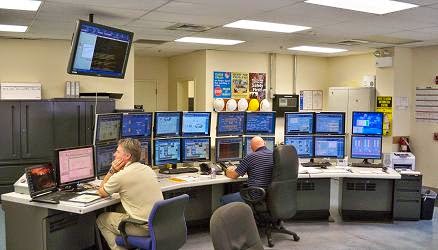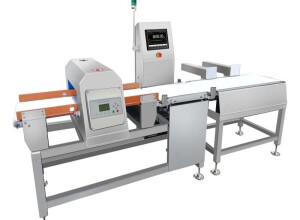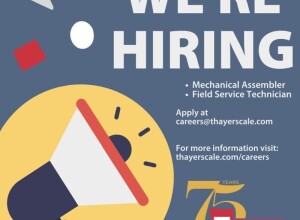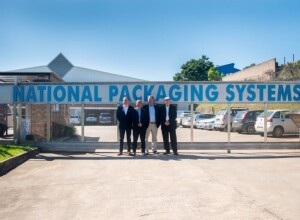For tourists, Hawaii is known for its stunning beaches, delectable local cuisine and endless opportunities to engage with nature. However, most people don’t realize that Hawaii is also the most isolated island chain on earth, and year-round home to over 1.2-million people who require electricity to live their day-to-day lives on the state’s beautiful six main islands.
The “Big Island” of Hawaii is larger than all five of the other islands combined. The island’s residents, businesses and tourists look to Hawaii Electric Light Company, Inc. (HELCO), a subsidiary of the Hawaiian Electric Company, to provide the energy that has transformed the islands from a Hawaiian kingdom into a modern state.
The Keahole plant is in Kailua-Kona, Hawaii, on the Big Island, and is one of HELCO’s primary power-production facilities. It features three combustion turbines that generate about 240 GWh of energy each year — almost one-fourth of the entire power-generation capacity available on the island.

Unfortunately, in 2006, the company was faced with up to 50% downtime caused by the turbine control systems.
“The original turbine control system was completely proprietary, and by 2006, also entirely obsolete,” says Norman Verbanic, HELCO’s production department manager. “Replacement parts were essentially nonexistent. When something failed that we couldn’t fix ourselves with a repaired card, flying in a controls engineer to troubleshoot the system could cost tens of thousands of dollars.”
Because of HELCO’s isolated location, repair parts could take more than two days to arrive. Flying in controls engineers from other countries could take even longer. The result: the Keahole plant was at reduced capacity nearly 50% of the time.
“To improve our uptime rates, we knew we needed a new turbine control system with an open architecture that our staff could troubleshoot and optimize themselves, without having to rely on outside expertise,” explains Verbanic.
In 2008, the state of Hawaii and the Hawaiian Electric Company crafted an energy agreement that requires 40% of electricity needs and 70% of overall energy needs (including transportation) to come from clean, renewable sources by 2030. “Long term, we’re hoping to have the entire Keahole plant producing power from locally raised biodiesel,” Verbanic notes.
Integrated Architecture, New Possibilities:
Once Verbanic and his team made the decision to replace their obsolete turbine control system, they selected the Rockwell Automation PlantPAx™ process automation system. Based on the Rockwell Automation Integrated Architecture™ platform, the PlantPAx system delivers a unified process, discrete and information solution.
The entire system is configured using Rockwell Software® RSLogix™ 5000 software and communicates to I/O inputs via ControlNet™, and third-party operator interfaces via the EtherNet/IP™ network.
“We looked at other traditional DCS vendors, but they each had proprietary, closed systems and expensive spare parts, maintenance and support contracts,” says Verbanic. “We couldn’t afford that in terms of expense or time — especially not at our remote location. We were familiar with Rockwell Automation products, and knew we could troubleshoot, maintain and optimize the PlantPAx system ourselves.”
The Wood Group, a Rockwell Automation PartnerNetwork™-recognized systems integrator headquartered in Loveland, Colo., was contracted to install the new turbine control system.
“We benchmarked the PlantPAx system against all other DCS systems to prove it was capable of handling the high bandwidth and rapid execution rate requirements that high-speed, aeroderivative gas turbines demand,” explains Clark Weaver, project manager, Wood Group Controls.
At the Keahole plant, Wood Group engineers left the original I/O from the previous control system in place, but removed the original processors that caused so many issues previously.
“Our original system was triple redundant, with three separate processors and I/O cards for each turbine,” Verbanic says. “With the new system, we’ve leveraged the original triplicated I/O field devices and matched them with new triplicated I/O modules streamlined to simplex PlantPAx processors. This helped protect process uptime should something fail unexpectedly while significantly simplifying the system architecture.”
The PlantPAx processors also were equipped with redundant parallel power supplies for enhanced reliability.
In addition, Allen-Bradley® XM® condition-monitoring modules monitor vibration on each turbine and generator. This helps identify potential problems before they reach a critical level. Information from each XM module is transmitted back to the central control system for improved, real-time turbine health monitoring and predictive maintenance.
Wood Group engineers also implemented an Allen-Bradley Combined Generator Control Module (CGCM). The duplexed CGCM seamlessly integrates with the PlantPAX system to provide digital power metering, voltage regulation and automatic synchronization control for each of the turbines. The redundant configuration enhances system reliability.
Increased Flexibility, Reliability:
With the old turbine control system, the question wasn’t when the plant would start up, but rather if it would start up at all. “With the PlantPAx system, we know the controls are running whenever we need them,” says Verbanic.
In fact, turbine controls-related downtime at the Keahole plant dropped from a high of around 50% to less than a few percentage points annually since the system upgrade. And when a rare controls problem does occur, troubleshooting and resolution is fast, without having to cross-reference cryptic codes and mind-numbing acronyms.
Three years later, when the HELCO team decided to convert the Keahole facility to a combined-cycle plant, they knew they wanted to stick with Rockwell Automation.
“With our great success on the turbine retrofit project, we knew we wanted to utilize the PlantPAx system for plantwide control as well,” Verbanic explains. “We were looking for a flexible system that would allow us to accommodate fluctuations in demand and knew the PlantPAx system could do exactly that.”
Mustang Engineering, a Wood Group company, was contracted for the project, and together with the HELCO team, convinced HELCO’s engineering firm to use the PlantPAx system for the entire facility.
“The power generation industry is asking for a flexible, reliable, open-control platform,” Weaver says. “On the turbine project, we proved that with the right engineering expertise, the PlantPAx system is exactly that. Based on that success, we also proved that the PlantPAx system was a viable alternative to traditional DCS platforms for plantwide control as well.”
Now, the PlantPAx system controls almost every aspect of the Keahole plant, from the turbines, heat recovery boilers and generators to the water treatment, steam turbine and emissions systems, as well as most balance-of-plant applications. Verbanic and his operations and maintenance teams benefit from significantly simplified maintenance, operability and troubleshooting by using a single hardware and software environment for the entire facility.
“Replacement parts are easy to obtain and cost-effective to keep in stock, and our staff is more than capable of identifying and solving any problems that arise, no matter where the problem may be located in the plant,” says Verbanic. “In fact, they’ve been able to identify opportunities to optimize the system entirely on their own. They’ve really been able to focus on becoming experts on the PlantPAx system.”
With significant improvements in turbine downtime and plantwide control on a single open platform, the staff at HELCO is far more self-sufficient.
“It’s been a really pleasant ride,” Verbanic adds. “Since each island is an autonomous grid without interconnections to neighbor island utilities, we cannot rely on the outside world to keep the lights on. With the robustness and flexibility of the Rockwell Automation solution, we do exactly that.”





























Interested? Submit your enquiry using the form below:
Only available for registered users. Sign In to your account or register here.